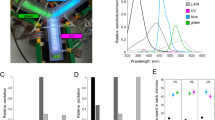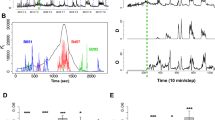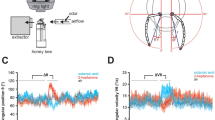Abstract
THE work of von Frisch1 and others has shown the ability of honeybees to communicate the direction of a food source by indicating the angle between the azimuths (compass direction) of the source of food and the Sun. In northern or southern latitudes, the Sun is always low enough in the sky for its azimuth to be clearly determined by the bees ; but in the tropics the Sun at one or two seasons of the year passes through the zenith (that is, directly overhead), or very close to the zenith, at midday. What effect does this have on honeybee communication ?
This is a preview of subscription content, access via your institution
Access options
Subscribe to this journal
Receive 51 print issues and online access
$199.00 per year
only $3.90 per issue
Buy this article
- Purchase on Springer Link
- Instant access to full article PDF
Prices may be subject to local taxes which are calculated during checkout
Similar content being viewed by others
References
Frisch, K. v., “The Dancing Bees” (Methuen, London, 1954).
Lindauer, M., Naturwiss., 44, 1 (1957).
Author information
Authors and Affiliations
Rights and permissions
About this article
Cite this article
NEW, D., BURROWES, F. & EDGAR, A. Honeybee Communication when the Sun is Close to the Zenith. Nature 189, 155–156 (1961). https://doi.org/10.1038/189155a0
Issue Date:
DOI: https://doi.org/10.1038/189155a0
Comments
By submitting a comment you agree to abide by our Terms and Community Guidelines. If you find something abusive or that does not comply with our terms or guidelines please flag it as inappropriate.



